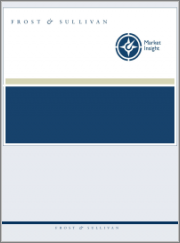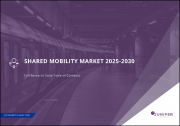
|
시장보고서
상품코드
1415522
KINTO Mobility의 전략적 프로파일Strategic Profile of KINTO Mobility |
||||||
KINTO 브랜드의 핵심 자산 활용 극대화 및 차량의 장기적 가치 향상
2015년 프리미엄 자동차 제조업체에서 기존과 다른 자동차 보유 모델을 취급하는 100% 자회사 분사가 시작되었습니다. 트렌드가 바뀌고, 대량 판매 OEM 업체가 주도권을 잡게 되었고, 도요타의 KINTO는 시장에서 인정받는 브랜드가 되었습니다. 2015년부터 도요타의 공유 모빌리티 전략은 수동적인 역할에서 능동적인 역할로 크게 진화했습니다. 2015년 당시 도요타는 카셰어링 분야에서 여러 개의 파일럿 사업을 동시에 진행했고, 우버, 겟어라운드와 같은 다른 사업자와 여러 제휴를 맺었습니다. 와 여러 제휴 관계를 맺고 있었습니다. 그러나 현재는 독립적인 자회사가 몇 분에서 몇 시간, 몇 달에 이르기까지 모든 이용 사례에 대한 서비스를 제공하고 있으며, 사용에서 소유권까지 모든 비즈니스 모델을 아우르는 서비스를 제공합니다. 또한, 도요타는 차량 공급업체로서의 역할도 계속하고 있습니다. 특히, 공유 차량에서 지속 가능한 차량(하이브리드 및 수소차)의 보급이 확대되고 있는 현재, 도요타는 차량 공급자로서의 역할을 계속하고 있습니다. 도요타는 2040년까지 카셰어링, 구독, 마이크로모빌리티 서비스를 통해 MaaS 생태계를 확장하여 사고 감소, 교통 체증 및 오염 감소라는 전체 전략에 연계할 계획입니다.
본 분석의 목적은 다음과 같습니다.
- 세계 모빌리티 시장에서 Kinto의 존재감을 전략적으로 조망해 봅니다.
- 모빌리티 분야에서의 Kinto의 활동과 새로운 모빌리티 제품 및 서비스를 포함한 포트폴리오의 확장에 대한 소개
- 2023년 및 향후 모빌리티 분야에서의 KINTO의 활동 비교 분석
- 자동차 산업에 혁명을 일으킬 새로운 모빌리티 제품 및 서비스 이해
- 전략적 결론 및 제안
목차
전략적 필수 요건
- 왜 성장이 어려워지고 있는가?
- The Strategic Imperative 8(TM)
- KINTO Mobility 전략적 필수 요건의 영향
- 성장 기회가 Growth Pipeline Engine(TM)을 가속
성장 기회 분석
- 분석 범위
- 도요타 그룹의 공유 모빌리티 이니셔티브 - 개요
- 성장 동력
- 성장 제약 요인
- 도요타 그룹 구조와 모빌리티의 위치
- 경쟁 환경
- OEM의 모빌리티 하위 브랜드 및 전략
- OEM의 모빌리티 이니셔티브
- 지역별 공유 모빌리티
- OEM과 자가 운전 부문 - 히트맵
- OEM과 비드라이브 및 MaaS 부문 - 히트맵
- 자동차 소유에서 사용으로 - KINTO의 USP
성장 기회 분석 : KINTO Mobility
- KINTO의 모빌리티 비전과 전략
- KINTO의 지역 개요
- KINTO의 모빌리티 커버 범위 : 유럽
- KINTO의 모빌리티 커버리지 : APAC
- KINTO의 모빌리티 : 미국, 중동, 남아프리카공화국 지역 커버율
KINTO Mobility의 쉐어드 모빌리티 솔루션
- 라이드 셰어링 : KINTO Join
- 카셰어링 : KINTO Share
- 라이드 헤일링과 Demand Responsive Transit-: KINTO Ride
- MaaS : KINTO Go
- My Route App : Japan (KINTO Go)
- KINTO Mobility 경쟁 구도
KINTO Mobility의 장기적 모빌리티 솔루션
- KINTO One : 서비스와 특징
- KINTO One : 주요 하이라이트
- KINTO 렌트&플렉스
- Toyota Wallet의 특징
- KINTO Mobility 기타 서비스
- 일본에서의 기타 KINTO 서비스
Toyota : 미래의 모빌리티솔루션
- Woven Planet Holdings
- Woven City 개요
- Woven City : 개발 테마
- Toyota Group : 쉐어드 자율형 모빌리티
끝에
- 가야할 길
성장 기회
- 성장 기회 1 : 차량 이용 모델
- 성장 기회 2 : 쉐어드 플릿을 위한 차량 공급업체
- 성장 기회 3 : PBV와 VaaS 모델
- 도표
- 면책사항
Maximizing Asset Utilization and Enhancing the Long-term Value of Vehicles, Central to the KINTO Brand
Spinning off wholly owned subsidiaries to handle nontraditional car ownership models started in 2015 with premium automakers. The trend has shifted, with volume OEMs taking the lead, and Toyota's Kinto has become a well-accepted brand in the market. Toyota's strategy in the shared mobility space has evolved quite a lot since 2015, from being more passive to taking on a more active role now. In 2015, Toyota had several pilots running simultaneously in the car-sharing space and had several partnerships with other operators such as Uber and Getaround. But now, its stand-alone subsidiary offers services covering all use cases, ranging from a few minutes to hours or months, covering the entire breadth of usership-to-ownership business models. In addition, Toyota continues to play the role of a vehicle supplier, especially now that the penetration of sustainable vehicles in shared fleets is increasing (both hybrid and hydrogen vehicles). By 2040, Toyota plans to expand its MaaS ecosystem through car-sharing, subscription, and micromobility services, tying in with the overall strategy of fewer accidents and lesser congestion and pollution.
The following are the objectives of the analytics:
- To provide a strategic overview of Kinto's presence in the global mobility market.
- To profile the activities of Kinto in the mobility space and its portfolio expansion to include new mobility products and services.
- To provide a comparative analysis of Kinto's activity in the mobility space in 2023 and the future.
- To understand the new mobility products and services revolutionizing the automotive industry.
- To provide strategic conclusions and recommendations.
Table of Contents
Strategic Imperatives
- Why is it Increasingly Difficult to Grow?
- The Strategic Imperative 8™
- The Impact of the Top 3 Strategic Imperatives on KINTO Mobility
- Growth Opportunities Fuel the Growth Pipeline Engine™
Growth Opportunity Analysis
- Scope of Analysis
- Toyota Group's Shared Mobility Initiatives-An Overview
- Growth Drivers
- Growth Restraints
- The Toyota Group Structure and Where Mobility Fits In
- Competitive Landscape
- OEMs' Mobility Sub-brands and Strategies
- OEMs' Mobility Initiatives
- Shared Mobility by Region
- OEMs and the Drive-yourself Segment-Heatmap
- OEMs and the Be-driven and MaaS Segment-Heatmap
- From Car Ownership to Usership-KINTO's USP
Growth Opportunity Analysis-KINTO Mobility
- KINTO Mobility-Vision and Strategy
- KINTO Regional Summary
- KINTO Mobility Coverage-Europe
- KINTO Mobility Coverage-APAC
- KINTO Mobility Coverage-Americas, Middle East and South Africa Coverage
KINTO Mobility's Shared Mobility Solutions
- Ride-sharing-KINTO Join
- Car-sharing-KINTO Share
- Ride-hailing and Demand Responsive Transit-KINTO Ride
- MaaS-KINTO Go
- My Route App-Japan (KINTO Go)
- The Competitive Landscape for KINTO Mobility
KINTO Mobility's Long term Mobility Solutions
- KINTO One-Services and Features
- KINTO One-Key Highlights
- KINTO Rent and Flex
- Toyota Wallet Features
- Other Services in Japan-KINTO Mobility Market
- Other KINTO Services in Japan
Toyota- Future Mobility Solutions
- Woven Planet Holdings
- Woven City Overview
- Woven City-Development Themes
- The Toyota Group-Shared Autonomous Mobility
Conclusion
- The Way Forward
Growth Opportunity Universe
- Growth Opportunity 1-Vehicle Usership Models
- Growth Opportunity 2-Vehicle Suppliers for Shared Fleet
- Growth Opportunity 3-PBV and VaaS Models
- List of Exhibits
- Legal Disclaimer



















